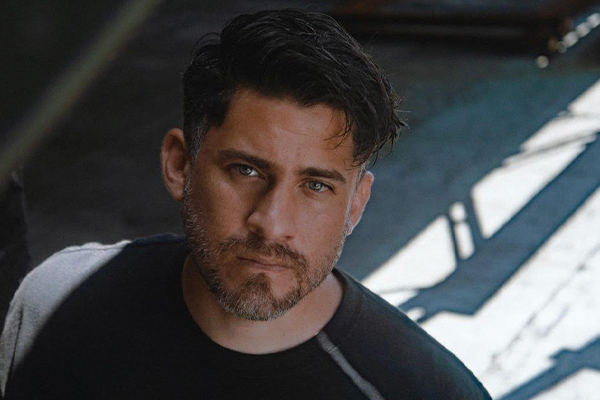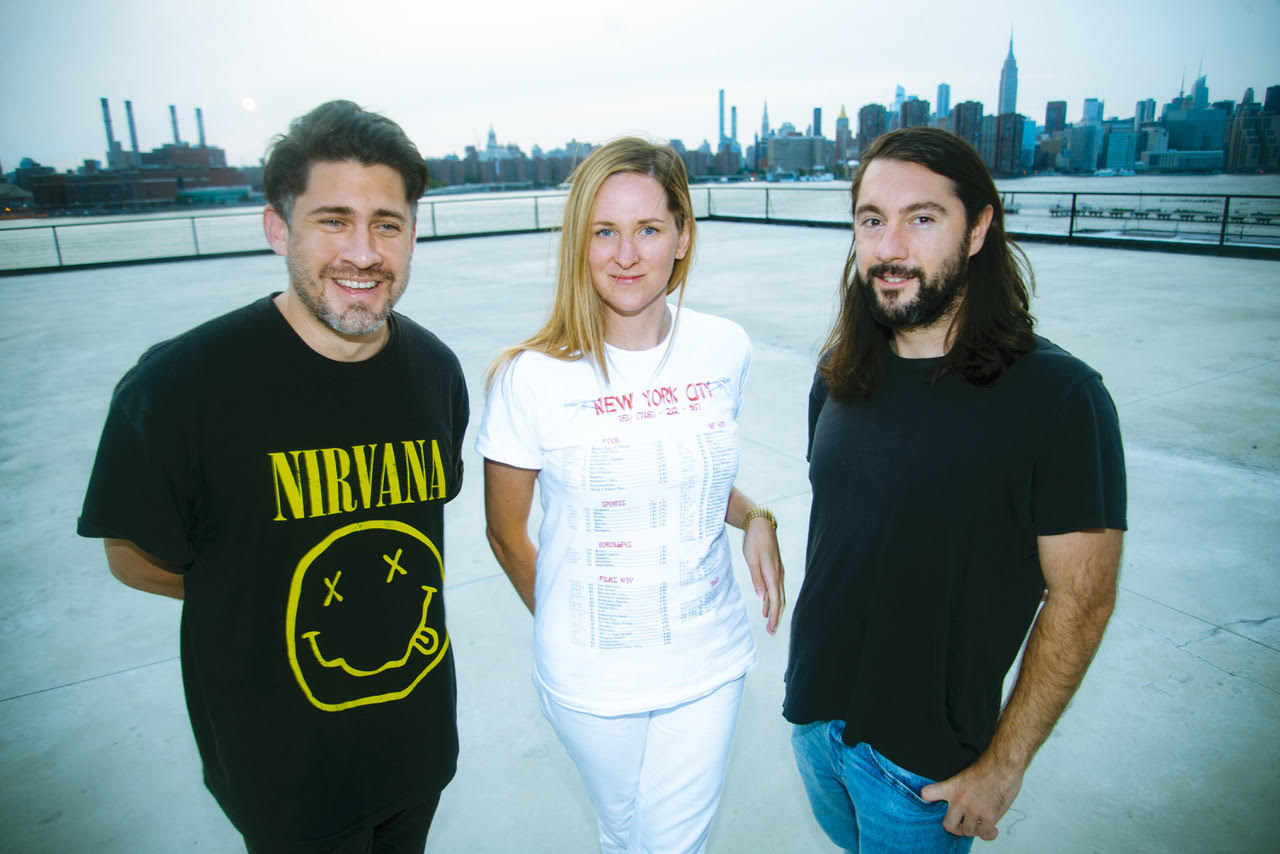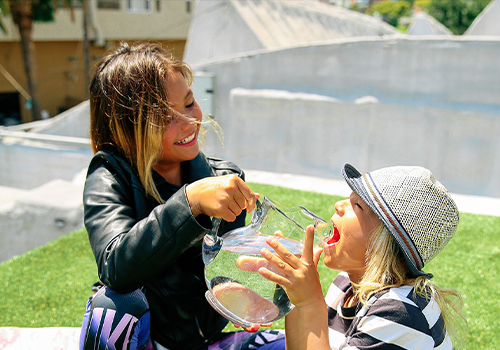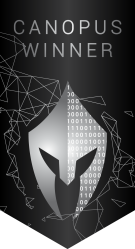
Interview
Roberto Max Salas
Young Hero, United States
Roberto is the Co-Founder and President of Young Hero, where his experience in creative advertising leads him to curating culture-defining ideas that empower the next generation.
1 Please give us a brief bio of yourself and your background.
I have a background in creative advertising that spans over 10 years, working with brands such as Apple, Nike, Google, Oreo, Spotify and The Coca-Cola Company. During my time at 360i, I was the Art Director behind the Oreo Black Out Tweet from Super Bowl XLVII. In April of 2015, I joined R/GA as a Senior Visual Designer on Nike working on projects like #TakeOnTJ, and bringing to life the campaign for the first basketball gear engineered just for women. In 2017, I joined Milk Studios as Creative Director. I’m now the Co-Founder and President of Young Hero, a creators studio dedicated to culture defining ideas that empower the next generation.
2 What made you become/why did you choose to become a digital designer/artist?
Since I can remember, I always found comfort and a lot of passion when engaging in creative activities – from filming home videos with my siblings to making music in GarageBand. Growing up in Ecuador, I never considered I could take my professional path in that direction. With a little research, I found that Advertising was the professional career that was made up of all of my passions. That led me to long nights of experimenting with design programs which led me to become a designer.
3 Tell us more about your business/company, job profile, and what you do.
I love purpose-driven design in general. Whenever my team and I start a project, we always try to spend enough time exploring elements where we could embed the brand’s purpose and mission through visual details. For example, in the Question How You Hydrate campaign we did for Lonely Whale, we chose the color palette and 90s TV test pattern of the brand VisCom, based on the fact that single-use plastic was a problem that started in the 90s. This is something that may not be so obvious to the consumer, but it makes a difference when trying to sell a particular design system when there is purpose behind every detail.
4 To you, what makes a “good” design?
Simplicity behind the message. I got my start in Advertising at the prime of “print ads,” and I always enjoyed buying Lüerzer’s Archive magazine. The ads that really resonated with me were the ones that you could understand the message by the mere visuals and didn’t really need any copy at all.
5 Describe your design style and its main characteristics.
Adaptable. I think because of my time in the advertising industry, I always try to not be too biased to what I would design but tailor the design more towards the customer. Once that design direction is established, I try to make sure that the craft is embedded into anything my team and I put together. That sometimes means bringing the right collaborators based on a particular project. We find that the more you work with people that align with the project's mission the better the output.
6 Tell us about your design process.
I always encourage my team to start with moodboards. A lot of times it is all we need as we start developing a project even from the strategic phase. Moodboards can always serve as our northstar and something we can come back to often when we feel stuck. After that, depending on the time we have, we try and create as many iterations as possible and start cutting from there.
7 Where do you draw inspiration from?
Design books we have at the office, architecture blogs, films and different design blogs. I also have about 12 different bookmark folders in my Instagram account organized by creators. Oftentimes, I love to bring designers from my moodboards to collaborate on the project, so it serves as a nice database of potential resources as well. One example where we did that is with artist @berlinmichelleart for a Lonely Whale horoscope social campaign we did recently as an extension of #HydrateLike.
8 What current trends in digital design (or really anything digital related) are you most excited about?
I’m really excited about 3D and motion. We’ve recently been exploring a lot more with 3D, and we find it to be extremely valuable not only in a final product but also in terms of having flexibility in mockups when putting together presentations. Instagram Filters and Effects have also been extremely exciting to play around with for clients like Lonely Whale but also offering it as a service to the music artists in the Young Hero roster. We recently made face filters for SAFA GAW’s new single “Cold Summer” as well as the Instagram effects for every song in KABLITO’s latest EP.
9 Congratulations! As the winner of the 2020 Vega Awards, what does it mean to you and your company and team to receive this award distinction?
It means so much because we did it in collaboration with Lonely Whale. They were the biggest supporters of our company since day one, and their mission aligns so well with ours. It’s all about ensuring there is an ocean for the future generations. This has been at the core the purpose of Young Hero, and we’re so excited to continue to share this message through all the different initiatives that Lonely Whale leads every year.
10 Can you explain a bit about the winning work you entered into the 2020 Vega Awards, and why you chose to enter this project?
As I mentioned before, this project is near and dear to us at Young Hero because Lonely Whale has been our partner from the beginning. Not to mention the importance of the message behind the Question How You Hydrate campaign. It’s all about shining a light on an issue that will affect the future generations. The most exciting aspect of this project is the tight strategy we were able to put together behind the lineup of celebrities and creators. Through the radical collaboration with Lonely Whale, the campaign helped spread the message surrounding the facts of single-use plastic all wrapped in a carefully designed brand identity filled with optimism. The results speak for themselves, as the PSA video we created with Lonely Whale has earned 372,000 views. The powerful and action-inspiring video also effected change in the marketplace, as Lonely Whale worked alongside the makers of Vita Coco to launch sustainable water brand Ever & Ever in resealable aluminum cans. This caught the attention of Pepsi and Coca-Cola, which subsequently announced plans to switch to aluminum for Aquafina and Dasani.
11 What was the biggest challenge with this project?
Communicating optimism and action in the face of eco anxieties around climate change. Through early research, we discovered that a lot of environmental causes use scare tactics in their communication, so we decided to disrupt the category by approaching the message and design with pure optimism and education. Unlike traditional PSAs, which can be dark and overly serious, we and Lonely Whale built a bright, vibrant world. The PSA includes a tongue-in-cheek sales pitch from Zooey Deschanel, vigilante work by Jason Momoa, and some wise words from Diplo: “Water bottles – don’t f**king use them.” This is perfectly exemplified throughout the different experiences that made up the Museum of Plastic as well, which was a crucial tentpole of the campaign strategy.
12 How has winning an Award developed your practice/career?
It’s definitely helped in terms of expanding our network. We’re only as good as our collaborators and awards always open the door to meeting new people in the industry. Obviously, it also helps in terms of finding new opportunities off course, and we are extremely humbled and grateful for that as well.
13 What are your top three (3) favorite things about the digital industry?
It is iterative and evolves at a faster pace because it has democratized creativity. In general, there is more room to improvise and try things in real time to see if they work. If they don’t, you can move on to the next.
14 What makes your country specifically, unique in the digital industry?
Well, I am originally from Ecuador, but I left as a teenager so I never got to work in the industry there. However, more and more, I’m seeing young Ecuadorians having more of a creative presence online specifically through social media platforms. In terms of the U.S., it’s having access to young creators who are eager to collaborate and are multi-disciplinary.
15 Where do you see the evolution of digital industry going over the next 5-10 years?
I think in the next 5-10 years, digital tools will be taking more practical roles and becoming accessories to everyday life. Today, a lot of new technologies and innovative tools are taking the form of entertainment (for example face filters, lenses and effects). A great example of a digital fad being used in a more practical way is (the resurrection) of QR codes at restaurants for no-contact transactions due to COVID-19. We’re already starting to see other cases such as digital fashion, as well as 3D makeup through face filters. I’m really excited to see how e-sports and gaming technologies can take more of a primary role in our daily lives as well.
16 If you were a student entering this industry or an aspiring Vega Award submitter, what advice would you give them?
I would say keeping an open mind and learning how to take constructive criticism early in your career. Sometimes we get married to our first or second iterations, and it is hard to let go or make necessary decisions because of that. Especially when starting out, it is important to constantly get feedback from mentors and people we admire because they will be able to see the holes quicker due to their experience.
17 What resources would you recommend to someone who wants to improve their skills in the digital industry?
I actually loved learning to design from books. There’s something about having a book next to your computer and trying things while you learn that can not compare to online tutorials. There’s obviously lots of free YouTube videos for small and quick tricks. I would avoid using/buying digital packs that make design so generic, it will end up hurting your technical skills in the long run.
18 Tell us something you have never told anyone else.
The name of our agency “Young Hero” pays homage to Abdón Calderon, a teenage lieutenant who led the Ecuadorian army to independence from Spain despite his battle wounds. His nickname is “The Hero Boy.” Almost no one knows that story :)
19 Who has inspired you in your life and why?
A big inspiration has been the fact that I’m the firstborn in my family generation. I’m always making sure I’m setting the right examples for my younger siblings as well as my cousins who are still in Ecuador. That has impacted my professional decisions in a positive manner.
20 What is your key to success? Any parting words of wisdom?
Part of my key to success is constantly seeking inspiration around me in the form of experiences and bringing those learnings not just to design, but in the way we approach daily collaboration.
21 Do you have anything else you would like to add to the interview?
Thank you to the VEGA Award for acknowledging our work and to Lonely Whale for being such an amazing partner.


